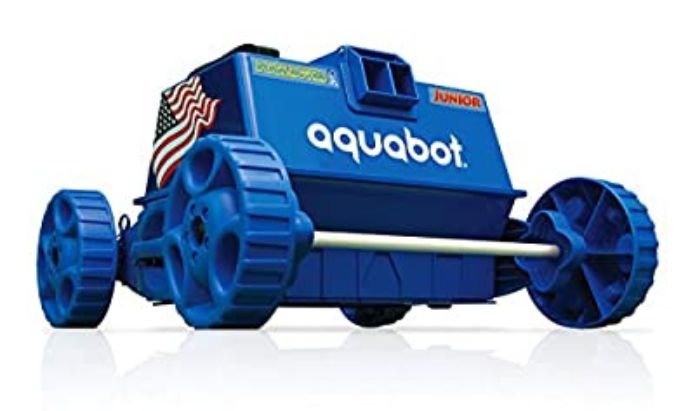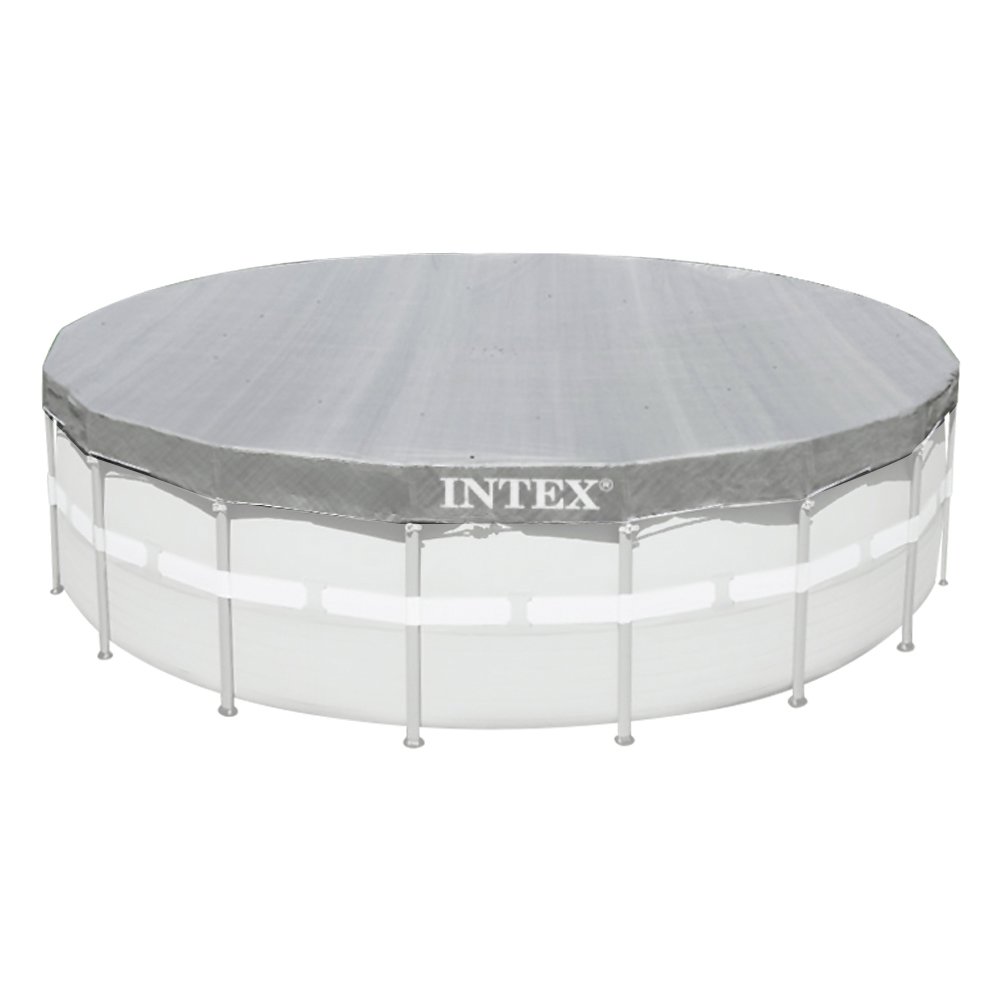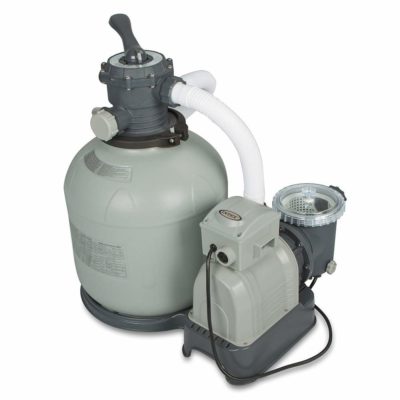A smart maintenance guide for your pool
Above ground swimming pools give you access to unlimited fun at any time of the year, be it summer or winter, thanks to the technological advances throughout the world. But even the best of the pools require maintenance from time to time to function at their absolute best. This is the part most first time swimming pool owners dread.
Table of Contents
Toggle
Another article on Swimming Pool Maintenance: Best Above Ground Pool Maintenance Guide
The pool is in the yard and it seems to be running, but what is what and how do I run this thing? If that is your question, then by the end of this article you can equip yourself with the set of techniques you need to know about pool maintenance. Swimming pool maintenance can be divided into two areas. First, are the chemicals used for water treatment and second is maintenance in general. Chemicals have to do with everything you add to the water in order to maintain water quality and proper sanitation. Maintenance is everything from vacuuming the pool, to keep the pump clean. The first tip that we can give is that there are as many different ways of maintaining a pool as there are different pools. Once you’ve had a pool for a while, you will find that some things work better for you than others.
Water Treatment
Probably the most intimidating part of a swimming pool is the chemicals. It does seem rather complicated, but in reality, it’s not that bad. Here is what follows is a step-by-step chemical maintenance guide that is designed explicitly for beginners. It doesn’t cover everything but will get you started. With the pool, you may or may not have received certain chemicals. Here is a list of what you will need on a regular basis:
1. Powder Chlorine
2. Chlorine Puck
3. Algaecide 5%, 10% or higher concentration
Powder
A standard above ground pool demands a powder chlorine treatment once a week to sanitize the pool or once a day as a daily dose of sanitiser. This type of cleansing involves raising the level of chlorine in the water so high that it kills bacteria and neutralizes organic material. The amount that you will use depends solely on the amount of water that your pool can hold. The reason we should clean the pool once a week is to ensure the pool is properly sanitized throughout the year. Regular cleaning is what you’re going to be doing once a week. Most people prefer to clean their pool at the end of the weekends when everybody is done swimming for the day. Cleaning is generally good in the evening after the sun goes down, not during the day because the sun’s ultraviolet rays eat up chlorine.

The way you apply granular chlorine to the pool is by using a large bucket and fill it with hot water (the exact quantity of water doesn’t matter, just fill the bucket). You then add the granular chlorine to the water in the bucket (always chlorine in water, never water on chlorine). Stir the solution with a stick to dissolve the chlorine completely, slowly pour the liquid around the perimeter of the pool. You should avoid splashing the liquid chlorine since it is a very concentrated chlorine solution that will bleach clothing on contact. It is also very irritating to the skin, so gloves should be worn. Needless to say that getting dissolved chlorine in the eyes is not a good idea. Wear safety goggles if possible and, if a mishap does happen, immediately wash your eyes with cool clean water and consult a physician immediately.
Chlorine Pucks
The reason behind using chlorine pucks is to reduce the amount of time you spend on maintaining your swimming pool. Chlorine is used to keep your pool sanitized and a certain amount is required in your pool at all times. In this way, you won’t have to chlorinate your pool manually every day. They dissolve with the pool water very slowly and create a slower chemical reaction than powder chlorine. Another sign that your pool might require extra cleaning is a slimy feeling on the liner. If this occurs, brush the wall and the bottom of the pool and rub it off that night since a slimy liner is the first sign of algae.
Algaecide
Algaecide is used to prevent algae from forming in the swimming pool water. Algae is a microscopic organism that grows in colonies and is often green in colour. Algaecide should be used on a weekly basis and added to the pool right after your chlorine shock for convenience. It is possible to eliminate the need for algaecide if you maintain a high chlorine level. However, most people are sensitive to chlorine and would rather keep the normal level. If the chlorine is kept at the normal level, algaecide should be used.
Water Balance
Having said all this, the next step after putting the initial shock to the pool is to find out if your pool water is balanced. Balancing your pool water basically ensures that chlorine and algaecide you add actually work. Since all kind of things can upset the balance (rain, sunlight, people using the pool), your water will need periodic help to maintain its high quality.
Salt Water System
This item would replace the Automatic Chlorinator. It’s a system that automatically delivers sanitisers to the pool by manufacturing salt. With this system, NO Chlorine is necessary! The salt system saves you from the hassle of handling and storing sanitiser. This system is also used for easier maintenance and because salt feels better and it is less harmful to the body than standard chlorinated water. The mildly salted water passes through the electrolytic cell and sanitiser is produced. The sanitiser is produced and dissolved into the pool to kill bacteria and algae and then returns back to its salt state to be used over again. With fewer fluctuations in chlorine levels, pH levels are more stable. As a result, the pool’s water is much easier to maintain.
Regular Maintenance
The next part of this guide concerns the maintenance of the pool, pump, filter and so on. Let’s quickly review what makes up an above ground pool by starting with the basic plumbing.

Skimmer
This part is mounted on the wall of the swimming pool. This is where the water enters the filtration system. You will notice a basket in the skimmer. This is used to capture the largest debris that usually floats on the surface (leaves, small twigs, insects, and so on) that is too large for the pump to handle. Because of this, it’s obvious that this basket plays an important part and, as such, should be kept in the skimmer whenever the pump is running. From this, we can see that the water level in the pool will affect the skimmer’s ability to do its job. If the water level is too low, no water will enter the system causing the pump to run dry and maybe damage it. If the water level is too high, the skimmer will not be able to remove debris floating on the surface. The most important thing to remember about the skimmer is keeping it clean. If too much debris accumulates, it can block off the water supply, which of course can damage the pump.
Pump
The pump is what circulates the water through the filtration and chemical feeding systems. Above ground pool pumps are what we call gravity fed. This means that the pump needs to be below the water level of the pool. This is important since these pumps only push water. Inground pumps which are more expensive can also pull the water and then push it. A nice feature of above-ground pumps is the electrical hook-up, plug right into a standard electrical outlet, something an inground pump does not do.

The filter is that big round ball thing next to the pump. As the name implies, the filter is there to remove debris and impurities from the water. The filter does this by passing the water through silica sand that traps small particles. It is important not to underestimate the work the filter does. Many people believe that the water in the swimming pool is kept clean by the chemicals. In fact, the above ground pool filter is responsible for some 80% of the water’s quality. Chemicals kill microorganisms in the water that can be dangerous to humans. Once they are dead though, it’s the filter that catches them and removes them from the water.

This is a great time-saving device that is used to add a certain, controlled, amount of chlorine to the pool. In terms of maintaining the chlorinator, there’s not much to do. One reminder, however, granular chlorine or other chemicals must never be used in an automatic chlorinator. After some years, the chlorinator will begin to show chemical damage.
Filter Operation
Most of the time, the filter will be set to Filter. This is the large handle on the top of the filter. When on the filter, the water is being forced through the silica sand and is filtered. This will also be used to vacuum the pool (discussed later). Since this dirt is being accumulated in the filter tank, eventually it must be removed. How do we know it’s time to clean it? That’s where the pressure gauge comes into play. When you first start the filter system, take note of the pressure on this gauge. The number will be your clean pressure. This number is important because as dirt accumulates, the pressure tank will increase. When this pressure increases by 5 PSI, it’s time to clean the tank. This is done by backwashing.
To clean the filter, turn the pump off, turn the top handle on the filter to the backwash position and restart the pump. Water will now be circulating in such a way as to remove the accumulated dirt. This dirt and water will be flushed out through the backwash hose. It’s important to remember that you must always uncoil this backwash hose completely before restarting the pump or risk damage to the hose. We recommend backwashing for about 90 seconds. After this time, stop the pump, turn the filter handle to the rinse setting and restart the pump for about 10 – 15 seconds. This rinse is done to remove dirt that accumulates in the filter head. Again, turn the pump off and return the filter handle to the Filter position and restart the pump. Back-washing will be something you will do about once a week, depending on the pressure reading on the gauge. Apart from back-washing, there is no other regular maintenance that is done to the filter tank itself.
Pump Operation
The pump is really the heart of your pool. Without the pump, it would be impossible to keep your swimming pool clean. If the electrical supply is not adequate, it can damage the pump motor and greatly shorten its life. Again, if you don’t quite understand all this electrical stuff, contact an electrical professional to help you. When looking at the pump, you will notice a basket at the front of the pump. This is called the strainer basket. Its purpose is to stop ant debris large enough to damage the pump’s impeller. Since there is a basket in the skimmer, the pump’s basket should very rarely have any debris. But it does happen and it’s important to keep it clean. Apart from keeping the basket clean, there isn’t much else in terms of maintenance to do on the pump. Just remember that the pool will only be as clean as the amount of time the pump runs. If you use a timer, allow at least a minimum of 8 hours a day and have it run continuously if the water becomes the slightest bit troubled.
Vacuuming
Vacuuming is something you will be faced with if you do not have a bottom drain or use an automatic cleaner. When vacuuming, it is important to understand what exactly is going on. The vacuum is drawing water from the end of your vacuum pole and bringing it to the skimmer. From this point on, the water is flowing through the filtration system as it would normally. The water is being forced through the filter sand and returning to the pool by the return. Almost every time you vacuum, you will notice that some dirt is returning back into the pool from the return. Don’t worry this is normal. While it may seem like the dirt is coming back, in reality, it’s only a small percentage of the total dirt being picked up.
Something else you will notice when vacuuming is how cloudy the water can get. In fact, it may get to the point you cannot even see the bottom of the pool anymore. This is because the movement of the vacuum on the bottom is stirring much of the dirt up. To reduce this, it’s important to slow down. If you move the vacuum slowly, the dirt will not be stirred up, but rather drawn into the vacuum and into the filter. As you can imagine, all this dirt you are picking up will quickly get the filter dirty; therefore the first step is to perform a backwash when you want to vacuum. After you backwash the filter, get all your equipment ready.
Vacuuming Process
At this point, you’re ready to vacuum. With the filter tank set to Filter, turn the pump on and begin. When you are done, remove the vacuuming equipment including the vacuum plate in the skimmer and do another backwash. Sometimes when there is a great deal of dirt in the pool, it might be advisable to get the dirt right out of the pool by vacuuming with the filter set to Drain. The advantage here is the dirt does not go into the filter tank (which might be too much if there is a great deal of dirt) and no dirt will return to the pool from the return. The disadvantage is the water is leaving the pool hence the water level will drop. Depending on your ability to add water, this method of vacuuming might be an option.
Bottom Drain Operations
The bottom drain might be an option you have with your pool. It’s quite simple to use but is often intimidating to the first-time swimming pool owner. Let’s take a look. You will notice that the bottom drain is connected to the filtration system by a pipe coming out of the ground directly under the skimmer. The pipe is then connected to a large valve. This valve is the key to the bottom drain. The valve is connected to the skimmer at the top and the pump at the side. The handle of the valve has an arrow on it. Where the arrow is pointing to is the part of the plumbing that is turned off. This is the key. The valve controls where you want the water to go. If you want to draw the water by the skimmer only, you need to close the bottom drain. Since the part to which the arrow points is closed, we point the arrow at the bottom drain.
Now the bottom drain is closed and water will flow from the skimmer into the pump. If you have a lot of dirt at the bottom of the pool and want the bottom drain to work harder, turn the skimmer off. Again, this is done by pointing the arrow towards the skimmer. An important part to remember: with the pump working, you don’t want to turn off its water supply (remember that the pump can be damaged if it’s running without water). Therefore, do not turn the arrow towards the pump. Since we normally want to keep the bottom of the pool clean and we also want to keep the surface clean, we need a way to close nothing and have water flowing from both the top and bottom pipes. Even with a bottom drain, it might become necessary to vacuum the pool manually.
Tips of Bottom Drain
Those that have their pumps on timers normally find the bottom drain less efficient. This is because the bottom drain only works while the pump is running and that, once dirt falls to the bottom, it’s difficult for the bottom drain to pick up. If you do need to vacuum manually, remember to turn off the bottom drain so that the skimmer is pulling all the water and, therefore creating more suction.
One last piece of advice: In order to benefit from your new pool and to protect you from potential problems, we suggest you follow the above recommendations.
Another article on Swimming Pool Maintenance: Best Above Ground Pool Maintenance Guide





